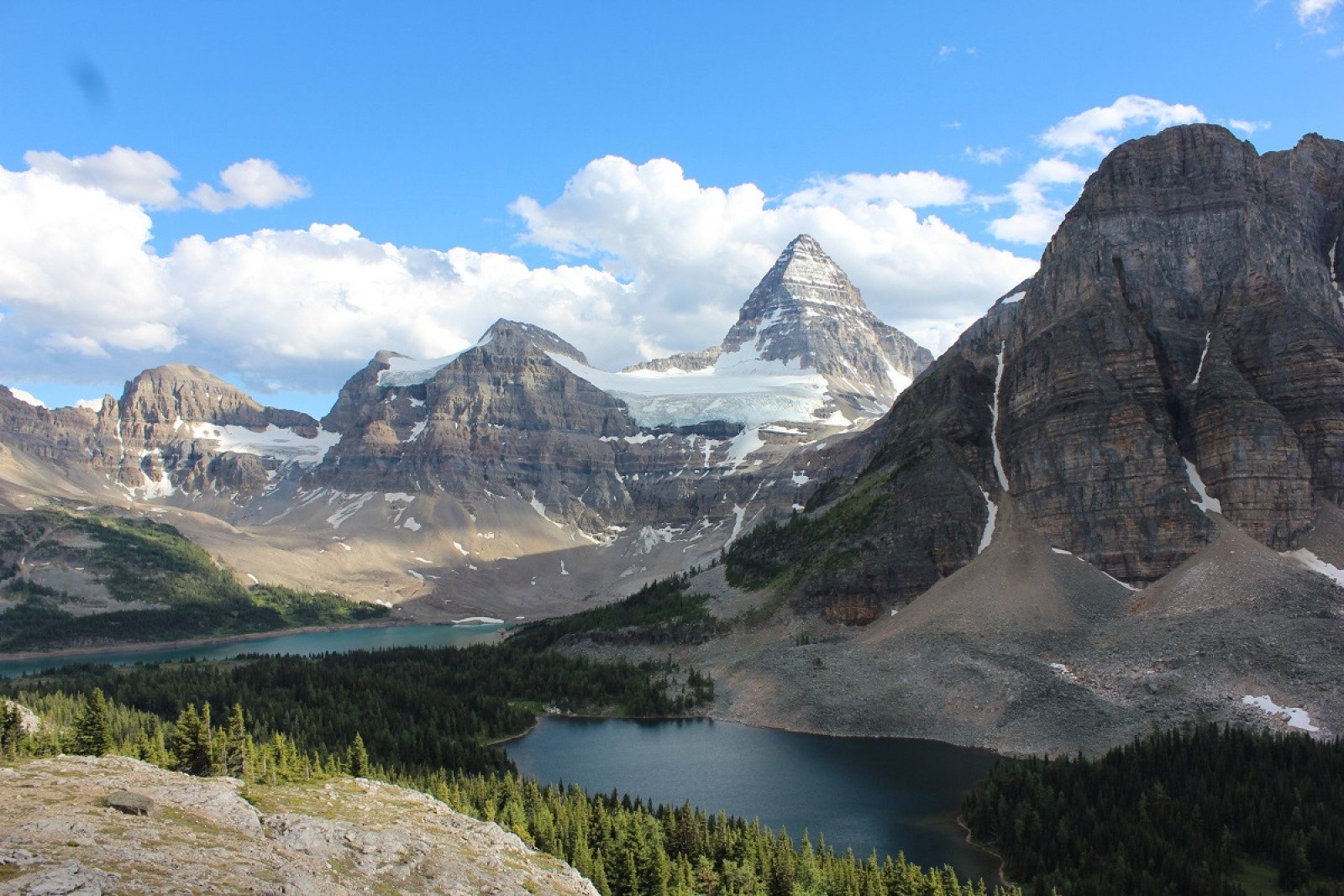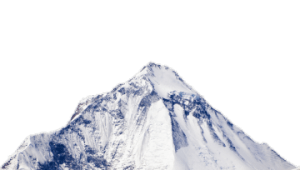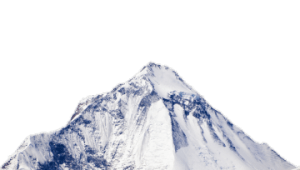Water, wind and landforms
Discover the power of water, ice and wind to move mountains.

Overview
Through experiments students explore the power of water, ice and wind and how these elements shape landforms.
Instructions
What you'll need
- TV or computer/projector to show video
- "The Grand Canyon!" video
- "The power of water" teaching instructions
- One small pebble frozen in an ice cube, fill ice cube tray ½ full, plan for one cube per student
- One tray per student, like a baking sheet, to contain a small amount of water
- One small bag of potting soil or sand (approximately 3L)
- Egg cartons (plan for one to two egg segments per student, optional as molds to create mountains)
- Jug of water
- Scrap paper, one piece per student
- Do the “Beautiful B.C.” activity and/or discuss landforms, and which landforms we can find in B.C. like mountains, rivers and lakes.
- Ask students how they think different landscapes are formed. Discuss how water, wind and ice are all powerful elements that can shape landforms. Have students consider how powerful these elements are, by sharing examples they have seen, like waves on a beach, icicles falling off roofs and wind blowing down trees. Share that the movement of these elements causes the landforms to change. Sometimes this can happen fast like in a storm, and sometimes slowly over millions of years. One of the ways this happens is by erosion like when a river floods it can erode or wash away the land on the sides of the river making it wider.
- Explain that they will do an experiment to explore how water, wind and ice can erode land. Refer to the “The power of water” teacher instructions to help you guide students through the experiment.
- On slide 2, provide each student with a tray, an egg carton segment and about 30ml of lightly dampened sand or soil.
- On slide 3, ask students to make a mountain by packing sand or soil into the egg carton mold or by free forming.
- On slide 4, have students predict what will happen if it rains. Then go around the classroom and pour a little water onto each student's mountain.
- On slide 5, discuss what happened. Explain to students that the water eroded or washed away part of the mountain changing its shape, and this happens all the time on a much larger scale to create landforms everywhere.
- On slide 6, ask students to predict what will happen now if the wind blows. Give each student a piece of scrap paper and have them wave the paper at their rain drenched mountain to create wind.
- On slide 7, discuss what happened. The wind may move the soil and water, new rivers may form, and the mountain may be eroded further by the wind and water moving.
- On slide 8, ask students to predict what will happen if there is ice on the mountain. Ask them to consider how long it could take for change to occur. Have students ‘repair’ their mountains or recreate them using drier soil and give each student an ice cube to carefully place on the top of the mountain. The ice cube will take time to melt so leave the experiment for about 30 to 60 minutes. Students can periodically check on their mountains to see what is happening.
- On slide 9, have students share what happened and how long this took. As the ice melted the pebble might have stayed on top of the mountain or rolled down creating more erosion. The ice melted but it took a long time. This might represent snow melting through Spring and Summer creating rivers and erosion of the mountain or it might be a glacier moving slowly eroding the land.
- Share "The Grand Canyon!" video with students.
- Discuss how water can change landforms very slowly, like the Grand Canyon or glaciers melting. Sometimes, water can change landforms quickly, like during the floods in November 2021, which washed out highways and restored the previously drained Sumas Lake.
Modify or extend this activity
- Pull up the “Landform power” activity to play a game to explore different landforms and their connections to human and animal activities.
- Share this story of the history and draining of Sumas Lake from an Indigenous perspective, and discuss how the lake returned after 100 years during the November 2021 floods.
Curriculum Fit
Science 3
Big idea
- Wind, water, and ice change the shape of the land
- Sample questions to support inquiry with students: How is the shape of the land changed by environmental factors? What are landforms? What landforms do you have in your local area?
Content
- Major local landforms
- Observable changes in the local environment caused by erosion and deposition by wind, water and ice
Curricular competencies
Questioning and predicting
- Demonstrate curiosity about the natural world
- Make predictions based on prior knowledge
Processing and analyzing data and information
- Experience and interpret the local environment
Social Studies 3
Content
- Relationship between humans and their environment
Curricular competencies
- Recognize the causes and consequences of events, decisions, or developments (cause and consequence)
Assessments
- Assess students’ ability to predict how water, wind and ice would affect their mountain in the experiment.
- Assess students’ understanding of how water, wind and ice can change landforms.
- Assess students’ participation and cooperation in the experiment and during class discussions.
Teaching Notes
Landforms in B.C.
B.C. is a beautiful province, made of many landforms including rocky coastlines, sandy beaches, forests, lakes, mountains, inland deserts, and grassy plains. For more information on B.C. go to WelcomeBC.
Changing landforms
Landforms are always changing. Sometimes this happens slowly over millions of years, and sometimes it happens rapidly. Landforms are shaped and continuously changed by water, wind, and ice. The process is through:
- Erosion: Earth materials being worn away or moved by natural processes like water, wind, and ice.
- Weathering: Static breaking down or dissolving of minerals.
- Deposition: Rocks and soil are moved and arrive in new places
For more information on erosion and weathering check out National Geographic: erosion and weathering.
Glaciers
Glaciers move downhill and outward under the weight of gravity. The movement is comparable to the movement of a river, but much slower. Glaciers can form on tops of mountains or in valleys. Constant thawing and refreezing causes fractures in bedrock and can deposit rocks far from their original location.
Watch this video to learn how glaciers move slowly.
Water wheels and clean, renewable electricity
Water wheels have been traced back in history to ancient Romans, to power machinery for grinding flour. The earliest turbines were invented and used in the early 19th century, and the world’s first hydroelectric power project was in England in 1878. They began to be used in North America in the 1880s. Currently more than 90% of B.C.’s electricity is generated with water. Dams are built across a river, creating large reservoirs or potential energy. As the water flows down through the dam and down pipes known as penstocks, its kinetic energy is used to turn a turbine. The generator converts the turbine's mechanical energy into electricity. This electric energy then goes through various transmission processes before it reaches our homes and business. This electricity is both clean and renewable.
For more information check out:
Conservation
Water and electricity are closely connected here in B.C. We know that with climate change, water levels can vary, including having too much water at times, such as during the floods in Fall 2021, and having longer droughts, such as in Fall 2022. Thus, water conservation is getting more and more important. Some dams, such as the Coquitlam watershed dam, are used both for potable water and to divert water to Buntzen lake for generating electricity, so conserving water also means that we have enough water to make electricity.
Water and energy conservation tips:
- Take short showers, ideally 5 minutes or less. Many showers use 10L per minute.
- Let the lawn go brown. Water use goes up in the summer, but that’s when we have less precipitation.
- Water gardens in the early morning or evening, to reduce evaporation.
- Turn off the tap when you’re done, and when brushing your teeth and washing your hands.
- Get a low-flow showerhead, low-flow toilet, aerators for your taps, to reduce water use.
- Wash laundry in cold water, and only wash clothes when they are dirty.
- Unplug electronics which can draw phantom power from the grid even when turned off.







